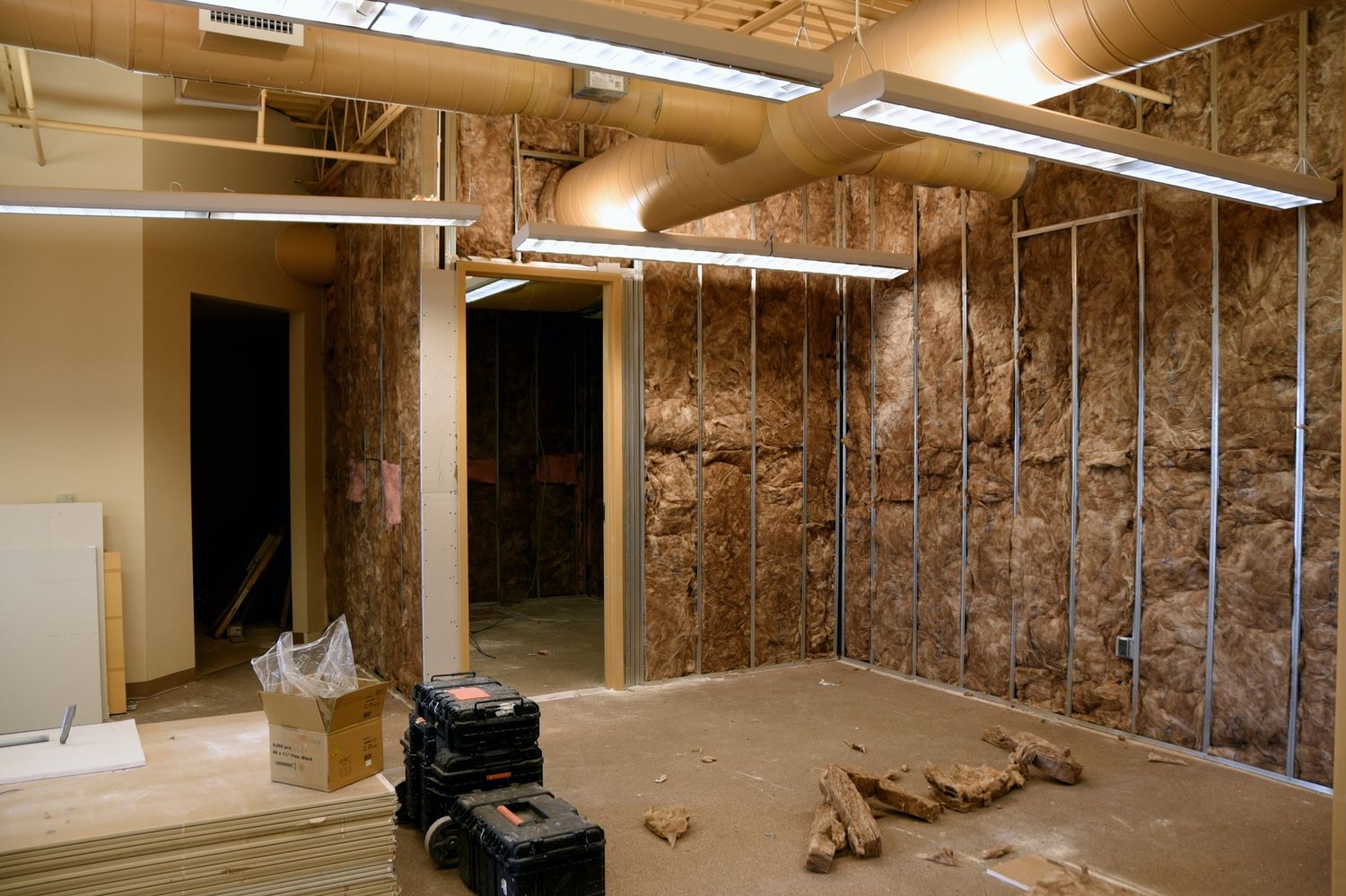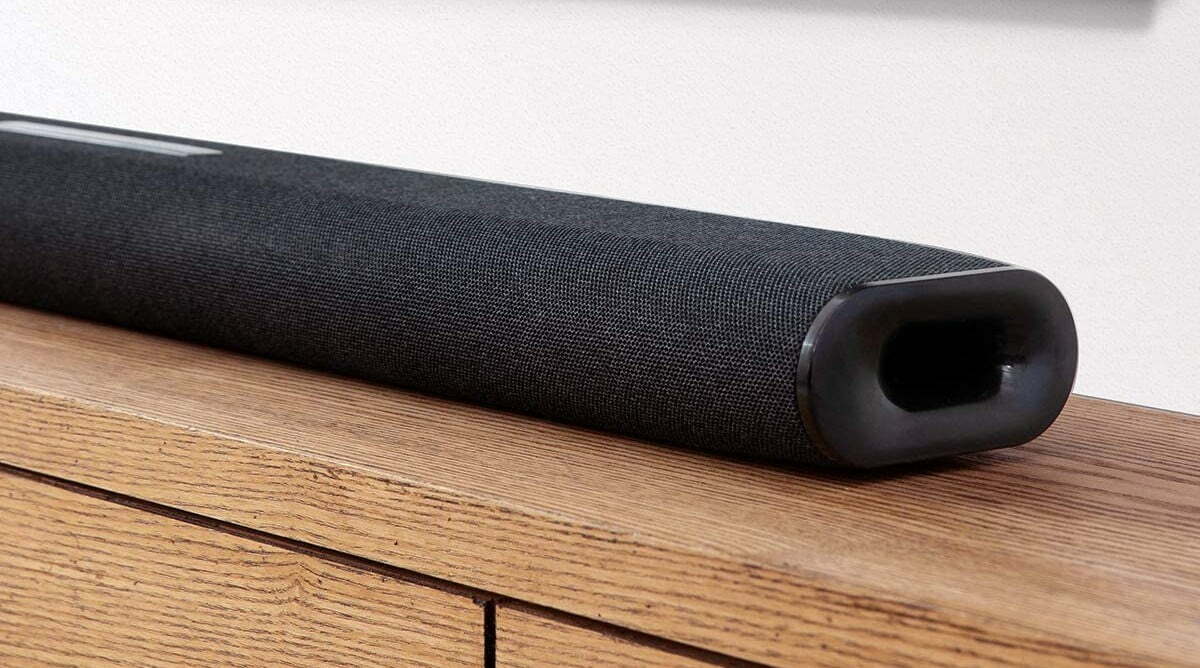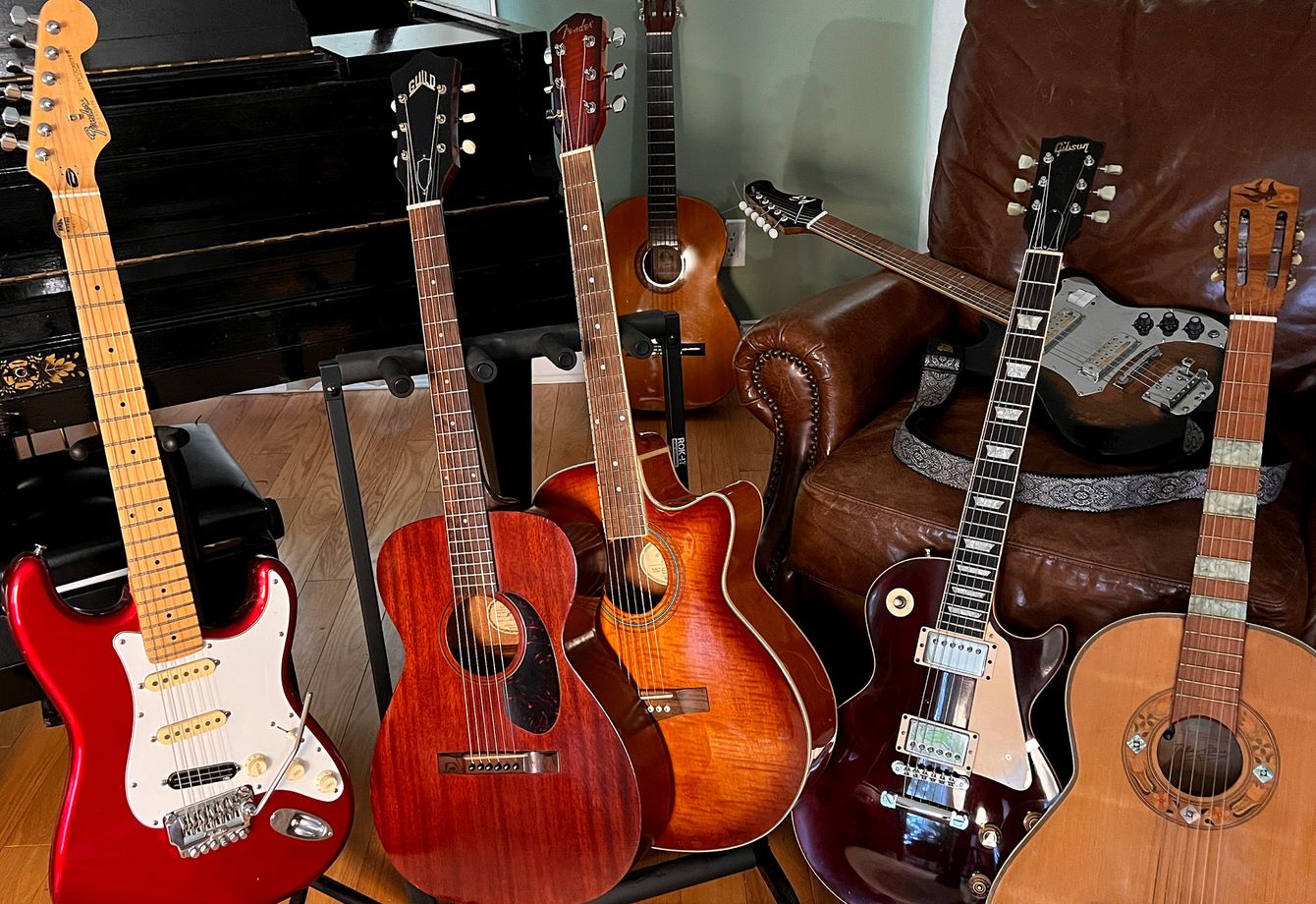Home>Production & Technology>Soundproofing>What Is The Difference Between Soundproofing And Sound Absorbing


Soundproofing
What Is The Difference Between Soundproofing And Sound Absorbing
Published: January 27, 2024
Learn the key distinction between soundproofing and sound absorbing, and understand how they can help improve the acoustics of your space.
(Many of the links in this article redirect to a specific reviewed product. Your purchase of these products through affiliate links helps to generate commission for AudioLover.com, at no extra cost. Learn more)
Table of Contents
Introduction
When it comes to creating a peaceful and quiet environment, soundproofing and sound absorbing are two key concepts that often come to mind. However, many people mistakenly use these terms interchangeably, without fully understanding the differences between them. In reality, soundproofing and sound absorbing serve different purposes and involve different techniques and materials.
In this article, we will explore the definitions of soundproofing and sound absorbing, highlighting the distinctions between the two. We’ll delve into the purposes, materials used, installation methods, cost differences, and effectiveness of each approach. By the end, you’ll have a clear understanding of when and how to implement soundproofing or sound absorbing techniques depending on your specific needs.
Whether you’re a homeowner looking to reduce noise from outside traffic or a business owner trying to create a quieter working environment, understanding the differences between soundproofing and sound absorbing will help you make more informed decisions and achieve the desired acoustic results.
So, let’s dive in and discover the unique characteristics of soundproofing and sound absorbing!
Definition of Soundproofing
Soundproofing refers to the process of reducing or eliminating the transmission of sound from one space to another. Its primary goal is to prevent external noise from entering a room or space. This could be noise coming from traffic, construction, neighbors, or any other source of unwanted sound. Soundproofing is crucial in creating a quiet and peaceful environment, free from distractions and disturbances.
There are various methods and materials used in soundproofing. One common approach is adding mass to walls, floors, and ceilings to block the transmission of sound waves. This can be achieved using materials such as dense insulation products or mass-loaded vinyl. The idea is to create a barrier that reflects or absorbs sound, preventing it from passing through.
Another technique used in soundproofing is decoupling or adding layers of materials that have different densities. This helps to reduce the transfer of vibrations, which can carry sound. By breaking the connection between different surfaces, such as walls and floors, sound energy is impeded and attenuated.
Sealing gaps and cracks is another aspect of soundproofing. Sound can easily travel through small openings, so ensuring a tight and properly sealed space is important. Weatherstripping, acoustic caulk, and door sweeps are commonly used to seal off any areas where sound could leak.
It’s important to note that achieving complete soundproofing is often difficult, especially in existing structures. However, effective soundproofing can significantly reduce the amount of noise that enters or escapes a room, improving overall acoustic comfort and privacy.
Definition of Sound Absorbing
Unlike soundproofing, which focuses on blocking or reducing the transmission of sound, sound absorbing refers to the process of reducing the reflection of sound within a space. Its main objective is to minimize echoes, reverberation, and unwanted reflections, making the room acoustically more pleasant.
Sound absorbing materials are designed to absorb sound energy rather than reflecting it. These materials are usually porous and have a cellular structure, allowing them to trap and dissipate sound waves. Common sound absorbing materials include acoustic panels, foam panels, fiberglass insulation, and specialized acoustic fabrics.
When sound waves encounter a sound absorbing material, they either pass through it or penetrate the material’s surface, causing the material to vibrate. This vibration converts the sound energy into heat, reducing the intensity and duration of sound reflections.
The placement of sound absorbing materials is crucial for their effectiveness. Ideally, they should be strategically positioned on walls, ceilings, or other surfaces that reflect sound. By placing sound absorbing materials in these areas, the amount of reflected sound is reduced, resulting in a more balanced and controlled acoustic environment.
Sound absorbing materials are commonly used in spaces where clarity of sound is important, such as recording studios, concert halls, theaters, conference rooms, and home theaters. These materials help to improve speech intelligibility, enhance music listening experiences, and create a more controlled and immersive audio environment.
It’s important to note that sound absorbing materials do not block sound from entering or leaving a room. They primarily work to control the acoustics within the space and reduce echoes and reverberation. In situations where both sound blocking and acoustic control are desired, a combination of soundproofing and sound absorbing techniques may be necessary.
Differences in Purpose
The key distinction between soundproofing and sound absorbing lies in their respective purposes. Soundproofing aims to prevent the transmission of sound from one space to another, blocking external noise from entering or escaping a room. Its primary goal is to create a quiet and isolated environment, minimizing distractions and disturbances.
On the other hand, sound absorbing focuses on controlling the acoustics within a space. Its purpose is to reduce echoes, reverberation, and unwanted reflections, improving the sound quality and intelligibility within a room. Sound absorbing materials help to create a more balanced and controlled audio environment by minimizing the amount of sound energy bouncing off surfaces.
While soundproofing aims to create a barrier between two spaces, sound absorbing is concerned with the internal acoustics of a single space. Soundproofing is ideal for spaces that require privacy and isolation, such as bedrooms, recording studios, or offices. Sound absorbing, on the other hand, is typically used in areas where sound quality and clarity are important, such as concert halls, theaters, or conference rooms.
Understanding the different purposes of soundproofing and sound absorbing is crucial in determining which approach is appropriate for your specific needs. If you’re primarily concerned with blocking external noise and maintaining a quiet environment, soundproofing techniques will be most effective. On the other hand, if you’re focused on controlling echoes and improving sound quality within a space, sound absorbing materials and treatments should be considered.
In some cases, a combination of soundproofing and sound absorbing may be necessary to achieve the desired acoustics and isolation. This is particularly true in environments where both external noise reduction and internal sound control are important, such as music studios or home theaters.
Materials Used
Both soundproofing and sound absorbing techniques involve the use of specific materials that are designed to serve their respective purposes. Let’s explore the materials commonly used in each approach:
Soundproofing: Soundproofing materials are selected based on their ability to block or reduce the transmission of sound waves. Some common materials used in soundproofing include:
- Mass-loaded vinyl: This dense vinyl material is effective at blocking sound and can be used to add mass to walls, floors, and ceilings.
- Fiberglass insulation: This insulation material is often used in between walls and floors to reduce the passage of sound waves.
- Acoustic foam: Though primarily used for sound absorption, certain types of acoustic foam can also provide a degree of soundproofing by reducing sound reflections.
- Resilient channels: These metal channels are installed between the structure and the drywall to minimize sound transmission through vibrations.
- Weatherstripping and seals: These materials are used to fill gaps and cracks, ensuring a tight seal that prevents sound leakage.
Sound Absorbing: Sound absorbing materials are designed to trap and dissipate sound energy, reducing echoes and reflections within a space. Common materials used for sound absorbing include:
- Acoustic panels: These panels are made from materials such as foam, fabric, or perforated wood, and are highly effective at absorbing sound waves.
- Fiberglass or mineral wool insulation: These materials not only provide soundproofing properties but also absorb sound within a room.
- Bass traps: These specialized acoustic devices are designed to absorb low-frequency sound waves, reducing bass buildup and improving sound clarity.
- Acoustic fabrics: These decorative fabrics have a porous structure that helps to absorb sound while providing an aesthetically pleasing finish.
It’s important to note that some materials can serve both purposes to some extent. For example, certain types of acoustic foam can provide a degree of soundproofing by reducing sound reflections, in addition to their primary function of absorbing sound within a space. However, when tackling specific soundproofing or sound absorbing needs, it’s best to choose materials that are specifically designed for each purpose for optimal results.
Installation Methods
The installation methods for soundproofing and sound absorbing techniques vary depending on the specific materials used and the nature of the space being treated. Let’s explore the installation methods commonly employed for each approach:
Soundproofing: The installation of soundproofing materials typically involves the following methods:
- Adding mass: Soundproofing often requires adding additional layers of material to walls, floors, and ceilings. This can be achieved by installing dense insulation products or mass-loaded vinyl. The materials are attached directly to the existing surfaces to increase their mass and reduce the transmission of sound waves.
- Decoupling: Decoupling involves creating a gap or installing resilient channels between the structure and the finishing materials, such as drywall. This helps to break the direct path of sound vibrations, reducing sound transmission between spaces.
- Sealing gaps and cracks: Properly sealing any gaps, cracks, or openings is crucial in preventing sound leakage. This can be done using weatherstripping, caulk, or door sweeps to ensure a complete seal in windows, doors, and electrical outlets.
- Soundproofing windows: Specialized acoustic window treatments or double-glazed windows can be installed to minimize the transmission of sound through windows, which are often a major source of external noise.
Sound Absorbing: When it comes to sound absorbing materials, the installation methods commonly employed include:
- Panel installation: Acoustic panels, foam panels, or fabric-covered panels are typically mounted on walls or ceilings. They can be attached using adhesive or mounting systems, allowing for easy removal and repositioning if needed.
- Ceiling treatments: Suspended acoustic panels or cloud baffles can be hung from the ceiling to absorb sound and reduce reverberation.
- Wall coverings: Textured acoustic fabrics or wallpaper can be applied to walls, providing both aesthetic appeal and sound absorption properties.
- Bass trap placement: Bass traps, which are specially designed to absorb low-frequency sound, are typically placed in corners where bass buildup is commonly found.
The installation methods for both soundproofing and sound absorbing can vary depending on the specific requirements of the space and the materials being used. It’s recommended to follow the manufacturer’s guidelines and consult with professionals when performing any installation to ensure proper implementation and maximize the effectiveness of the chosen techniques.
Cost Differences
When considering the cost of implementing soundproofing or sound absorbing techniques, several factors come into play, including the materials used, the size of the space, and the complexity of the installation. Let’s dive into the cost differences between these two approaches:
Soundproofing: Soundproofing can be a more expensive endeavor compared to sound absorbing, primarily due to the need for materials that block or reduce the transmission of sound. The cost of soundproofing materials like mass-loaded vinyl, resilient channels, and specialized insulation products can add up, especially for larger spaces. Furthermore, the labor costs associated with the installation of these materials can be higher due to the complexity of the process.
Additional costs may arise if modifications to the existing structure are necessary, such as sealing gaps and cracks or replacing windows with soundproof alternatives. The overall cost of soundproofing will ultimately depend on the specific requirements of the space and the desired level of noise reduction.
Sound Absorbing: Sound absorbing techniques generally tend to be more budget-friendly than soundproofing. Materials like acoustic panels, foam panels, and acoustic fabrics are widely available at different price points, allowing for flexibility in terms of budget. The installation of sound absorbing materials also tends to be less complex and time-consuming, resulting in lower labor costs in most cases.
While the cost of sound absorbing treatments can vary depending on the size of the space and the quantity of materials needed, it is generally more affordable compared to soundproofing, making it an attractive option for those looking to control the acoustics of a room without breaking the bank.
It’s important to note that the costs mentioned here are rough estimates and can vary depending on various factors. It is recommended to obtain quotes from professionals and suppliers to get a more accurate understanding of the costs involved for your specific project.
Effectiveness
The effectiveness of soundproofing and sound absorbing techniques can vary depending on factors such as the materials used, the extent of the treatment, and the specific noise sources. Let’s explore the effectiveness of each approach:
Soundproofing: When properly implemented, soundproofing techniques can significantly reduce the transmission of sound, creating a quieter and more isolated space. By blocking or reducing external noise sources, soundproofing can provide a noticeable improvement in overall acoustic comfort and privacy.
However, achieving complete soundproofing, especially in existing structures, can be a challenge. Certain noise frequencies, such as low-frequency sounds or vibrations, can be more difficult to block effectively. Additionally, sound can still leak through gaps or cracks in windows, doors, or walls if not properly sealed. While soundproofing can greatly reduce noise levels, it may not completely eliminate all external noise sources.
Sound Absorbing: Sound absorbing techniques are highly effective in controlling the acoustics within a space. By reducing echoes, reverberation, and unwanted reflections, sound absorbing materials create a more balanced and controlled sound environment.
When sound absorbing materials are strategically placed in a room, they can significantly improve speech intelligibility, music clarity, and overall sound quality. This makes them ideal for applications such as recording studios, home theaters, or conference rooms where the emphasis is on achieving optimal listening conditions.
However, it’s important to note that sound absorbing materials primarily focus on internal sound control and do not block external noise sources. They are designed to improve the acoustics within a space, rather than isolate it from outside disturbances. For complete noise reduction, a combination of soundproofing and sound absorbing techniques may be necessary.
The effectiveness of both soundproofing and sound absorbing will depend on various factors, including the specific materials used, the extent of the treatment, and the nature of the noise sources. Consulting with professionals and experts in the field can help determine the most effective approach for your specific needs.
Conclusion
In conclusion, understanding the differences between soundproofing and sound absorbing techniques is essential for creating a desired acoustic environment. While both approaches aim to improve the overall sound experience, they serve different purposes and involve distinct methods and materials.
Soundproofing is primarily focused on preventing the transmission of sound from one space to another. It aims to block external noise sources, creating a quiet and isolated environment. The use of materials with mass, decoupling, and sealing gaps are common strategies in soundproofing. While achieving complete soundproofing may be challenging, it can significantly reduce noise levels and improve overall privacy.
Sound absorbing, on the other hand, is focused on controlling the acoustics within a space. It aims to reduce echoes, reverberation, and unwanted reflections, improving sound quality and clarity. Sound absorbing materials, such as acoustic panels and fabrics, are designed to trap and dissipate sound energy. Sound absorbing techniques are widely used in environments where clear and balanced sound is important, such as recording studios, theaters, and conference rooms.
It’s important to note that while soundproofing and sound absorbing techniques can be effective in their respective objectives, they are not mutually exclusive. In some cases, a combination of both approaches may be necessary to achieve the desired acoustic results. By implementing soundproofing techniques to block external noise and incorporating sound absorbing materials to control internal acoustics, a more comprehensive and optimal sound experience can be achieved.
Whether you’re looking to create a peaceful home environment, enhance the sound quality of a room, or improve the acoustics of a commercial space, understanding the distinctions between soundproofing and sound absorbing will help you make informed decisions and achieve the desired acoustic goals.











